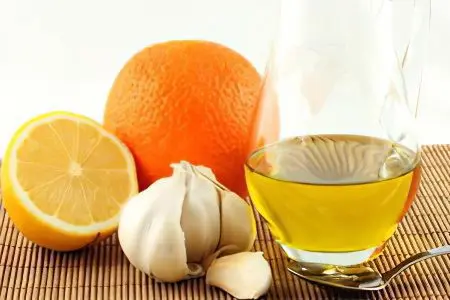
Prevention of influenza and ARVI is a set of measures aimed at preventing infection of the human body with viruses that cause the disease. Preventive methods of protection are divided into specific and non-specific.
Specific prevention of influenza and SARS is the annual introduction of a vaccine to the population. Due to the fact that viruses tend to mosaicism, the vaccine is adjusted annually. According to data provided by the WHO, it was thanks to mass vaccination that the intensity of influenza epidemics around the world was reduced. The modern vaccine is able to protect about 80% of both the adult population and children against influenza.
Non-specific prevention of influenza and ARVI is a set of general measures, including: airing the room, good nutrition, using masks, washing hands, taking drugs that affect the influenza virus, etc.
Specific prevention of influenza and SARS
Vaccination will be considered effective in terms of combating influenza only if it passes 50% of the country’s population or more. Currently, more than 20 different vaccines of 4 generations are registered in the Russian Federation.
Each vaccine is made from those strains of the virus that will be relevant in the coming year during epidemics.
The classification of influenza vaccines is as follows:
First generation vaccines may be alive or inactivated. An example of a live influenza vaccine is Ultravac, its use in modern medical practice is limited. The first generation inactivated non-live vaccine is Grippovac. Live vaccines are sprayed into the nasal cavity of a person and form long-term immunity. However, their significant drawback is that they produce a large percentage of adverse reactions.
Second generation vaccines represented by the so-called split vaccines. They contain destroyed particles of the virus with its surface and internal proteins. These are such vaccines as: Fluarix, Vaksigripp, Begrivak, Fluvaxin. When using these vaccines, there is also a high likelihood of developing side effects.
Third generation vaccines contain only highly purified surface proteins of the virus. They meet modern medical requirements regarding the safety of vaccinations among the population. Examples of such vaccines are Influvac and Agrippal S1.
Fourth generation vaccines in addition to highly purified surface proteins contain Polyoxidonium. These are such vaccines as: Grippol and Grippol plus. They not only protect against the flu, but also help to increase the body’s immune forces due to the immunomodulator that is part of them. This vaccine is well tolerated not only by adults, but also by children.
The third and fourth generation influenza vaccines are considered to be the most effective and safe. They practically do not cause side effects, but their disadvantage is considered to be less effective than live vaccines. Also, the vaccine cannot guarantee that a person will not get the flu. It only protects against strains of the virus that are expected to be most common during the upcoming epidemic.
In addition, the introduction of the vaccine allows:
Reduce the incidence of influenza;
Reduce the number and strength of side effects in the event that infection does occur;
Accelerate recovery, alleviate the course of the disease;
Reduce deaths from influenza.
It has been proven that mass specific prophylaxis of influenza and ARVI has a positive effect on the quality of life, contributes to the creation of an immune layer of the population in a particular area.
The following social groups are in particular need for a vaccine:
Elderly people;
Children of preschool and school age;
Employees of educational, medical, trade and other fields;
Pregnant women;
Persons with a weakened immune system, with chronic diseases.
As a rule, modern vaccines do not cause side effects, although some soreness at the injection site, hyperemia of this area of the skin, fever, runny nose, weakness, and allergic reactions may occur.
It is mandatory to refrain from vaccination for the following categories of citizens:
People during the acute stage of influenza or SARS;
People who have had influenza (not earlier than 3 months after infection);
Children under the age of six months;
People with individual intolerance to the components that make up the vaccine;
People with an increase in body temperature above 37 ° C, regardless of the cause that caused it;
People with blood diseases.
Nonspecific prevention of influenza and SARS

Nonspecific prevention of influenza and SARS is to increase the body’s resistance to viruses and prevent its penetration into the body.
There are the following practical recommendations that should be followed to protect yourself from infection:
Maintaining optimal parameters of air temperature and humidity in rooms with a large crowd of people.
Regular ventilation of the premises.
Walks in the open air.
Complete nutrition. Food should provide the necessary intake of proteins, fats, carbohydrates and vitamins.
An adequate drinking regime allows you to replenish the body’s reserves in the liquid and moisturize the mucous membranes. It has been proven that it is much easier for viruses to invade the epithelial cells of the upper respiratory tract when they are dry and have microcracks.
Physical activity, which includes daily exercise.
Complete rest. First of all, it is healthy sleep. To maintain the functioning of the immune system, you should sleep at least 8 hours a day.
Maintaining cleanliness in the room, daily wet cleaning with minimal use of household chemicals.
The introduction of a mask regime during epidemics of influenza and colds. The mask should not be touched with your hands after it is fixed on the face. Its reuse is not allowed.
Avoidance of crowded places.
Thorough hand washing after visiting public places. Until this moment, you should not touch your face, lips, nose.
In terms of hygiene, attention should be paid not only to the hands, but also to the nasal passages. The toilet of the nose must be carried out after each visit to a public place. For this, special solutions and sprays based on sea water, as well as regular saline, are suitable. In addition to this procedure, you can gargle with a solution of soda and salt.
During a conversation, you should keep at least one meter away from the other person.
In the premises of medical institutions, in classrooms, in kindergarten groups, at universities, it is advisable to use ultraviolet lamps.
The rules for non-specific prevention of influenza and SARS exist not only for healthy people, but also for those who are already sick.
They need to adhere to the following guidelines:
You should observe bed rest, refuse to visit any public places. At the first symptoms of the disease, it is important to call a doctor at home.
You should stay as far away from healthy people as possible and use a mask during forced contacts.
The patient should be in a separate room, which requires regular wet cleaning and ventilation.
When coughing and sneezing, the mouth should be covered with an individual handkerchief to prevent the spread of the virus over long distances.
Disposable maxi should be used for no more than 2 hours, and after this time they must be disposed of.
After each contact with respiratory secretions, hands should be treated with an antiseptic gel or thoroughly washed with soap and water.
All people in contact with a sick person should be monitored for one week.
Special attention deserves various immunostimulants and antiviral drugs, which are often recommended for use in order to increase the body’s immune forces and to fight the virus. Before you start taking this or that remedy, it is worth remembering that there are a huge number of dummy preparations on sale, the effect of which has not been confirmed by scientific studies. Such funds do not have any preventive effect and are created to enrich pharmaceutical companies.
Before you go to the pharmacy to purchase an antiviral or immunostimulating agent, you should consult with your doctor and clarify the need for taking it.
To date, antiviral drugs with varying degrees of proven effectiveness are: Cycloferon, Kagocel, Lavomax (Tiloron, Amiksin), Tsitovir 3, Arbidol, Ingavirin.
For the treatment of flu and colds, the following proven effective remedies can be used: Remantadine (Orvirem, Remantadine), Relenza, Tamiflu, Peramivir.
In addition, there are interferon preparations that contain proteins, as it were, warning the cells of the danger and forcing them to become more active. Interferon preparations are Kipferon, Viferon, Intron, Reaferon, Cycloferon.
The need to take synthetic vitamins to prevent flu and colds also remains questionable. It is desirable that a person receive them from food, however, if this is not possible, then synthetic B vitamins, ascorbic acid, vitamin A should be taken.
Prevention of influenza and SARS is the key to maintaining health even during an epidemic. The main thing is to approach this matter with all responsibility and do not forget about simple rules that allow you to protect yourself and loved ones from infection.









